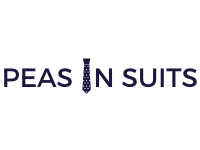Content marketing is robust and it can be used to expand your brand’s reach, build authority, drive traffic and increase sales.
But content marketing doesn’t stop at your blog.
Think of your blog as the foundation of your content marketing plan. If you stop with just your blog, you’re leaving out a lot of potential content assets that can add on to your foundation.
Start slow and sprinkle in new types of content into the mix once you’ve established your blog.
What should you do? The first thing is to not get overwhelmed. We’re just presenting a few content types, but even just 7 can make a person anxious and stressed. Content marketing is a marathon and not a sprint, so take it slow and schedule in new types of content.
Trust me, if you don’t add them to your schedule/editorial calendar, they’ll stay in the back of your mind and you’ll continue producing the easiest type of content.
There’s no law saying you have to add all of these types of content – or any of the dozens of other content types not covered – into your content marketing plan.
Let’s take a look at 7 types of content businesses are using to expand their reach.
1. Blog Content
Blog posts are an essential basis for all content marketing plans. People are consuming information (in a variety of formats) at an ever growing rate. And you and your business have something to share with the world.
You might say, “Well, I am just a plumber, so what can I share?” A lot.
People, whether it be a person trying to find an answer to a problem or learn something new, are flocking to blogs to expand their knowledge.
What Types of Blog Content Can You Produce?
Blogs can be filled with a lot of great content:
- How to Articles and Guides: Teach your audience something new. A plumber can teach their audience how to fix a simple faucet leak, for example.
- List Posts: Everyone loves list posts, and this is why these posts do so well. People are driven to lists of all A simple “X ways to save money when hiring a plumber” or “10 products every small business needs” will work well with most audiences.
- Resource Lists: People are yearning for knowledge. Sharing resources in your field or business is a great piece of content that is evergreen.
- Educational: Information can be used as an educational blog post. If you have something to teach – or even review (your product, for example), there will be an audience.
You can also write industry news if you’re at a true loss as to what to write for your next blog.

2. Case Studies
Case studies can be very intimidating, and they may not be something you can dedicate immense time to immediately.
But when you can write a case study, it’s an amazing way to demonstrate your expertise.
Explain What a Case Study Is to Me Again
Case studies are defined by Merriam-Webster as: “A published report about a person, group, or situation that has been studied over time; also: a situation in real life that can be looked at or studied to learn about something.”
Businesses use case studies to show how their product or service:
- Helped a client or customer
- Offered an advantage over other products or services
These are results-oriented studies. Case studies shouldn’t come off as a form of marketing.
I’m a firm believer in learning through real examples, so here are a few case studies that may help you get a hang of this all:
Don’t (for the sake of your audience) make your case study bland and boring. Use your study to tell a story, and discuss the “what,” “how” and “results” of the study. Sprinkle in images, graphs and any data, too – imagery can be used to demonstrate your results.

3. Checklists
Checklists are sort of a niche form of content. We have found great success with checklists for clients in some industries.
The idea is that people often get overwhelmed. And if you want to help a client or customer take action, it’s important to help him or her organize their ideas and actions a little further. Checklists can provide this guidance and really help a person get their priorities in order.
A good example of this can be seen with a client we worked with in the financial industry.
Our client helped people lower their debt, reduce credit card rates and get their finances in order. Some customers wanted a full service and were willing to have their hand held along the way. Other customers wanted to do a lot of the legwork themselves.
So, our client was looking for a way to help these clients while also staying in their mind for any additional services.
What did we do?
We created a checklist that included the basics:
- Calling credit card companies to renegotiate lower rates
- Researching existing mortgage interest rates
- Researching current mortgage rates
- Researching refinancing options
- Forming a budget, etc.
Everything was broken down into a simple checklist, and the client’s number and logo was at the bottom of the page. Not only did our client add a printable form of the checklist to their website, but they had the form printed out to give to clients that wanted to take a proactive approach to their finances.
The response was great.
A lot of people realized how hard the entire process was, and since the print out had our client’s number, they hired him after deciding it was too much work for them to do. Clients also decided to use services in the future.

4. E-Books
E-Books are interesting because some can be 819 pages (like Game of Thrones: A Song of Ice and Fire), while others can be 20 pages. You want to ensure your e-book:
- Provides substance
- Provides insights or solutions
If you’re a hosting provider, you don’t want to write a book about that time your nan met your grandpa. But, you might write a guide on how people can start a blog, use your service, or promote their website on a shoestring budget.
Now, most businesses and websites aren’t selling these books (you can if it’s really in-depth).
Instead, they’re using these shorter e-books as a way to capture email address. We’re going to be covering newsletters in greater detail below (it’s our 6th item on this list).
You can teach your audience something, capture their email address and have a way to connect with them intimately.

5. Interviews
Interviews are a great way to create content because they’re so informative. This is a unique form of content because you have the option of:
- Interviewing industry leaders
- Interviewing clients
- Interviewing potential customers or clients
But interviews do take quite a bit of time to conduct. You also need to reach out to people you often don’t know or have a close relationship with, which can be intimidating. E-mail is one of the best ways to conduct an “interview” because it doesn’t require a potential interviewee to spend a lot of their own time to participate.
You need to be prepared for the interview with questions you’ll ask, whether it’s just a one-question interview via email, a session on skype, the telephone, or a meeting in person.
A few of the many ways that you can use an interview are:
- Informative posts
- Mini case studies
- Expert guides
- Trends and prediction posts
- Common issues and concerns posts
- Current event response
- Inspirational posts / client testimonials
- Product or service review
- Roundup posts
You also have the option of turning these interviews into a blog post, video, podcast or infographic. If you’re able to have industry influencers join in on the interview, you’ll be surprised just how much they’ll help with promotion. These individuals, the ones that were interviewed, will share the content created because it is a powerful form of promotion for them, too.
I want you to know that if you’re sending out emails, you’re not truly conducting a journalistic interview, but you’re asking for a quote from a person or to answer a few questions you may have.
Tips for Success When Writing Email Interviews
A few tips to help you find success via email interviews are:
- Don’t ask 10 questions immediately. Many of these questions will not pertain to the interviewee and be a major turnoff to the reader.
- Ask one question and build off of it from there. “How did you start blogging” may be a generic question you ask. If you get a response, you can ask something simple, such as “if you had one piece of advice to new bloggers, what would it be?” If you bombard the person immediately, it will seem like too much work for them to reply – trust me.
- Make a connection first when possible. If a person has an idea who you are, it will be much easier for them to do an interview with you.

6. Newsletters
Newsletters allow you to stay in contact with readers. They’re more personal, and they’re sent directly to a person who wants your content, advice and experience. This is why capturing emails is very important.
Businesses collect emails all the time. Some businesses use these emails, and others let them collect dust.
I could write a book on writing newsletters, and a lot of books on the topic do exist.
Newsletters shouldn’t be all promotional. It’s tempting to keep trying to sell a product or service in your newsletter, but you’ll find subscribers leaving left and right. A good rule of thumb is that 90% of the content sent through newsletters should be information.
The remaining 10% can be promotional in nature.
A few tips when sending out newsletters are:
- Come up with a goal for the content produced.
- Stick to one topic, and do it well – people hate unorganized newsletters.
- Promote new posts and content to keep readers on your site.
- Headlines are the key to people opening your newsletter.
Tips for Writing Newsletter Subjects
You need to entice subscribers to open up your newsletter. I know that there are a lot of emails that are collecting dust inside of my inbox because the titles are boring. There is no reason for me to read these emails right now, so I put them off. Before I know it, they’re ancient relics just taking up bits on an email server somewhere.
The reason for my neglect all boils down to one thing: the subjects stink.
So, what could these newsletter writers have done differently? A lot.
- Ask Questions: What’s the One Thing Clogging Your Drain? I don’t know. What is it?
- Entice the Reader: The One Thing You Need to Drink to Live to 100 is a lot more enticing than Drink Green Tea If You Want to Live to 100.
- Be Bold: The Best Thing You Can Do for YOUR Blog is an example of being bold and enticing the reader.
Sometimes, the vagueness that repulses writers in blog posts is what allures readers in newsletters.
Want some more tips for writing a good newsletter?
7. Videos and Webinars
Videos and webinars may be two different things, but they’re similar in nature. Videos are a major driver of brand identity, trust and return on investment. Adobe conducted a study that found:
- 51.9% of marketing professionals name video as the best ROI in terms of content.
- Shoppers are 1.81 times more likely make a purchase after watching a video than non-viewers.
Videos have a way of helping a brand, company or blog come to life. Joe the Plumber may be just another name, but once Joe has a face that customers can see, he becomes more trustworthy.
And if his videos are informative and demonstrate his expertise, he’ll become even more trusted and seen as a person with real experience.
Just think about it.
Would you trust someone that has taught you how to clear clogs in their sink, fix broken pipes and fix dripping toilets for free versus someone that wouldn’t dare give their customers anything for free?
Of course, you don’t have to teach trade secrets via video.
You can also:
- Help resolve common customer problems.
- Demonstrate your newest product.
- Answer common questions people have.
And the list can go on and on. A lot of lawyers we’ve worked with will go a step further and run webinars to help potential clients with problems they may have. These webinars may be geared towards divorce, and then the lawyer will start to answer some questions from viewers along the way to make the webinar more personal.
The results turn out great in this case because:
- The lawyer is always more trusted afterwards.
- A lot of the viewers call to seek further legal counsel.
- The webinar can be reused and saved for future content.
A lot of the times, the video is saved and uploaded to YouTube as another content asset. You also have the potential to reach out to viewers in a very personal way. Anyone can do these webinars, too: lawyers, plumbers, bloggers, chefs, manufacturers – anyone.
Video is consumed at such a rapid rate that it must be part of your content portfolio.
You can even turn top blog posts – or any blog post – into video format. This allows you to have further content assets to promote.
This is really just the tip of the iceberg when it comes to content that businesses are using to promote their brands in today’s world.
So, what types of content are you using to expand your brand’s reach? Let us know in the comments below.
- 7 Types of Content Businesses Use to Expand Their Reach - August 28, 2016


